APOCALYPTIC EARTHQUAKE AMID TURKEY’S OIL WELLS. Highly Seismic Zone Drilled for Decades to Search Dadas Shale
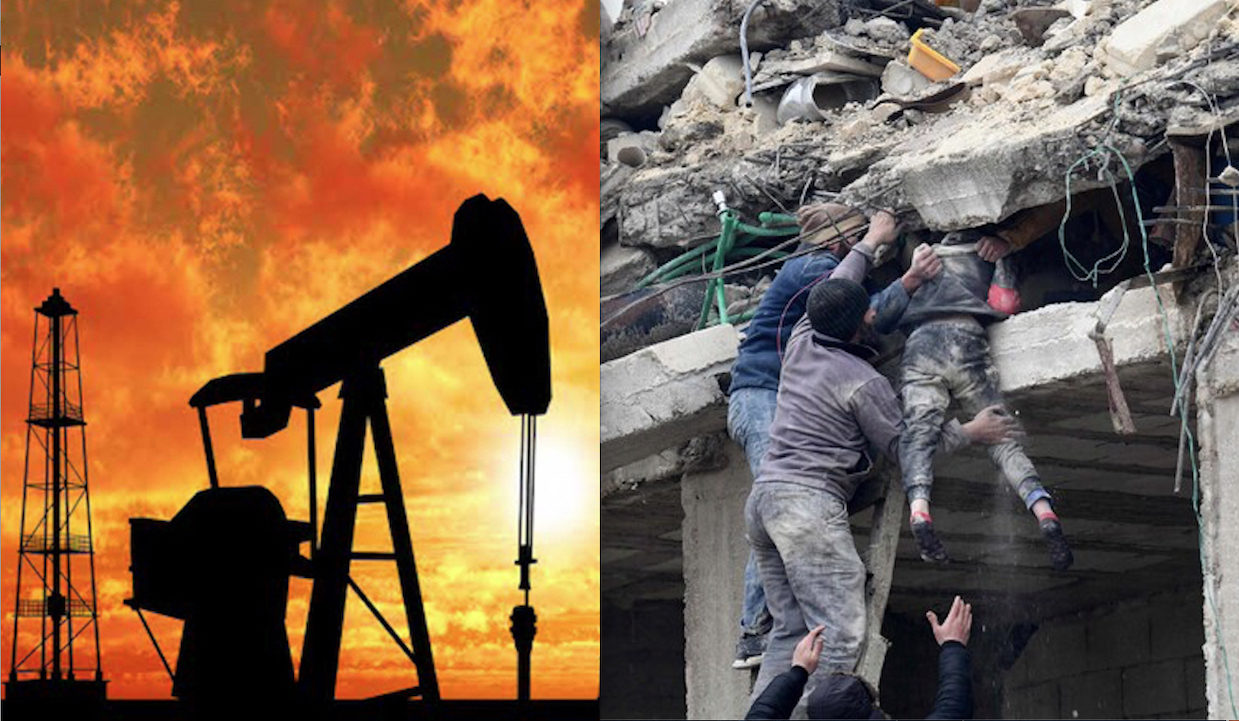
Summary
1 – THE SITE OF THE EARTHQUAKE HAS BEEN IN THE SIGHT OF OIL COMPANIES FOR DECADES
2 – THE DANGERS OF DRILLING THE UNDERGROUND IN SEISMIC AREAS
3 – THE CORRELATION BETWEEN DRILLS, SUBSIDENCY AND EARTHQUAKES
4 – HUNT FOR BLACK GOLD NEAR THE EARTHQUAKE EPICENTRE
5 – THE GAZIANTEP AND KAHRAMANMARAS AREAS REDUCED TO A COLANDER
by Fabio Giuseppe Carlo Carisio
The disastrous devastation, the tragic massacre that took place in Turkey and Syria cannot and must not have only an emotional response. That of newspapers and TVs that compete to find the most heartbreaking photo and story. That of politicians who compete for the media scepter of benefactors.
It must also trigger rational reflection. This is why we do not consider it premature but rather a duty towards the families of the victims to seek a reason for what happened that goes beyond resignation to God’s mysterious designs.
As we have anticipated in previous investigations on the highly probable correlation between earthquakes and wells drilling, the greedy hand of man also emerges from the bloody rubble of this apocalyptic drama; increasingly unconscious in his confrontation with nature, as happened with the pandemic triggered by a SARS-Cov-2 virus created in the laboratory to sell and test new dangerous vaccines…
The first exploratory oil drillings in Kahramanmaraş, epicenter of the devastating earthquake that caused thousands of deaths in the Gazientep region, in south-eastern Turkey, and in the neighboring governorate of Aleppo in Syria, were conducted way back in 1991 as attested by a study by a Turkish geologist published in issue 113 of the Bulletin of the Mineral Research and Exploration (source 1 – the links at the bottom of the article).
1 – THE SITE OF THE EARTHQUAKE HAS BEEN IN THE SIGHT OF OIL COMPANIES FOR DECADES
«My first investigations relating to the Kahramanmaraş area took place in 1980 on behalf of a private oil company» wrote Yüksel Önem, one of Turkey’s top petroleum geologists now retired.
«The Taurus mountains, which developed in the conjoining zone of the Anatolian and Arabian Plates, underwent a disruption between Bolkar mountain and Engizek mountain. This can be explained by the fact that the area was traversed and transformed by two ma- jor strike-sup faults situated at Mersin-east Bolkar mountain-Kayseri in the west and Antakya (Hatay)-Elazığ-Bingöl in the east In fact, the east-west oriented 200 km. wide area, covering the gulf of İskenderun and the northern pan of Adana, was compressed and deflected as far as the north of Sarız and the Arabian Plate was dislocated prior to the faulting, and moved circa 120 km».
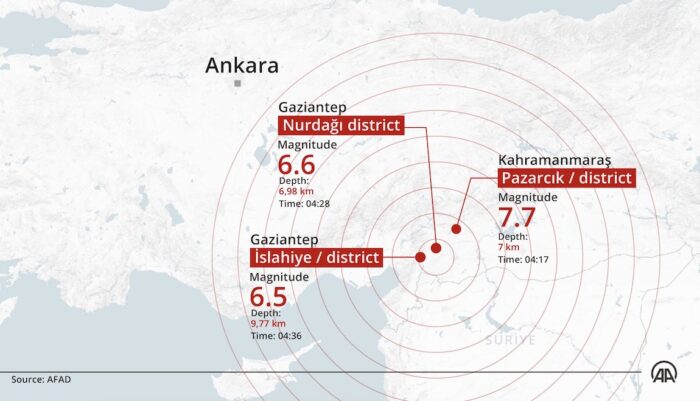
«Linked to this movement, the Miocene Nappe cover was dragged too far in the exactly opposite direction, i.e., to the south, and changed the original form of the mountain sequence. This relocation resulting from tectonic activities has emphasized, from the viewpoint of the settling of the forma- tions belonging to the Arabian Plate, the importance of the area north of Bolkar mountain-Engizek mountain line or the Taurus sequence and defined the hydrocarbon potential of Elbistan region. As to the Kahramanmaraş area, the fact that the oil-producing formations of the South- east Anatolia are found in this also, it continues to be an important objective».
Today around that country made famous by the black gold of the SE (South-East) Anatolian Basin, the vast Dadas Shale oil basin notoriously dangerous to extract due to the “fracking” technique with which rocks are broken at great depths, continues the count of victims is unstoppable.
More than 4,300 dead between Turkey and Syria. This updates the count of the victims of the devastating earthquakes that on Monday, February, 6,2023, destroyed thousands of buildings in southeastern Turkey and northwestern Syria. The Turkish authorities have brought their overall provisional death toll to 2,921, while the Syrian authorities have so far counted 1,444. The number of wounded, in Turkey alone, rose to 14,483.
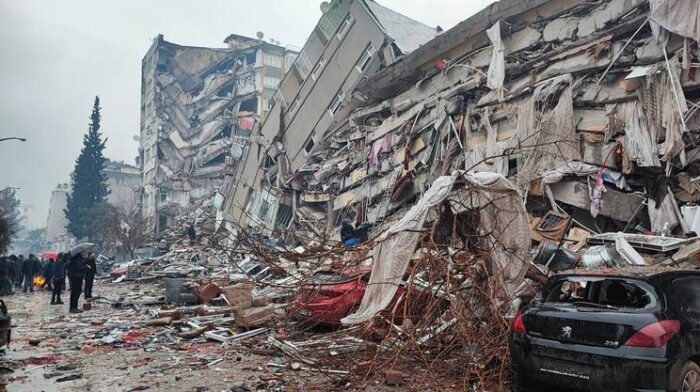
The update is growing hour by hour. In Turkey, at least 5606 buildings collapsed during and after the seismic wake which reached its peak with a 7.9 magnitude shock felt at 02:17 Italian time (04:17 local time + 2 CEST).
Salvatore Stramondo, director of the INGV Italian National Earthquake Observatory, explained to RaiNews24 microphones that the earthquake produced a release of energy that is about a thousand times higher than the Amatrice earthquake.
After the earthquake, an explosion was reported at a gas pipeline in the southern province of Hatay. This was reported by the Turkish press agency Ihlas, which quotes the operator Botas, according to which gas flows to the provinces of Gaziantep, Hatay and Kahramanmaras have been suspended.
2 – THE DANGERS OF DRILLING THE UNDERGROUND IN SEISMIC AREAS
Geophysical engineer Övgün Ahmet Ercan, according to the Hurriyet website. he said that he had a power of 130 atomic bombs and struck in “a highly seismic area, among those with the highest danger in the Mediterranean”.
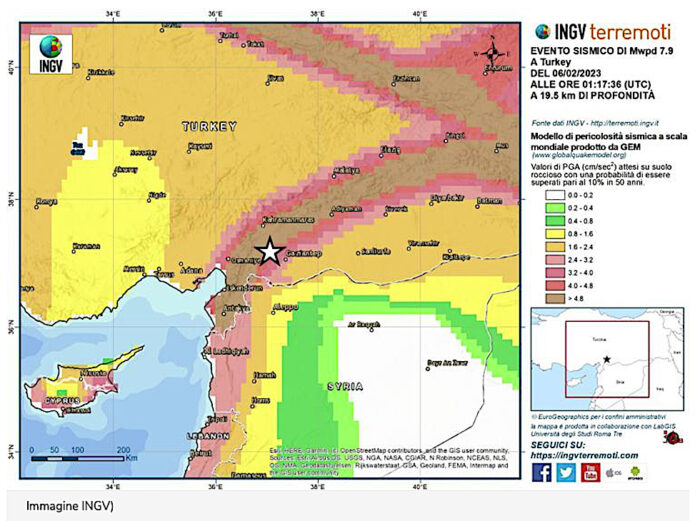
Today new tremors have hit the areas already devastated by the seismic swarm of the other night. The strongest of magnitude 5.6 according to the European Mediterranean Seismological Center (or 5.5 according to the United States Geological Institute) with epicenter is near the city of Gölbaşı, population 40,000, at a depth of about 2 kilometers.
“Turkey is located in a highly seismic area crossed by numerous fault systems: the area affected by tonight’s earthquake is considered to have a very high seismic hazard”.
This is explained by the seismologists of the National Institute of Geophysics and Volcanology (Ingv) who have drawn up and just published the worldwide Hazard Model produced by Gem.
But despite the danger, for about twenty years the subsoil has been drilled in search of black gold despite the fact that the cost/risk/benefit ratio has been deemed incongruous by an article of Dr. Armagan Derman (Source 2), director of Türkiye Petrolleri Anonim Ortaklığı (TPAO), the state oil company of Turkey.
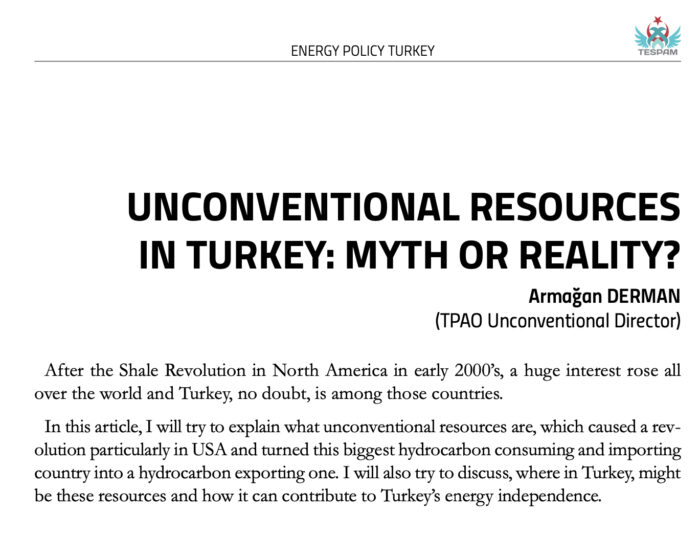
«Unconventional oil and gas, on the other hand, are those hydrocarbons which are pro- duced from the same petroleum system with conventionals, but from a different rock type. These rocks, as stated above, are referred to as shales. If a shale is rich in organic matter it is referred to as Source Rock. Despite conventional reservoirs, it is very difficult to extract oil and gas due to very low transmissibility of fluids. To have econom- ic flow rates, horizontal drilling and hydraulic fracturing is a must».
Derman in his critical text on the drilling of the basin for the search for this specific type of resource of the Anatolian territory and called “Dadas Shale” adds a sentence that today is disturbing.
«Figure-6 shows Turkey’s sedimentary basins. In theory, these are the areas where po- tential unconventional resources are. However, the reality is a little bit different. Turkey, despite wide range of people argue, is not an underexplored country. Petroleum geology of Turkey is well known and even in very high risk basins, wells were drilled».
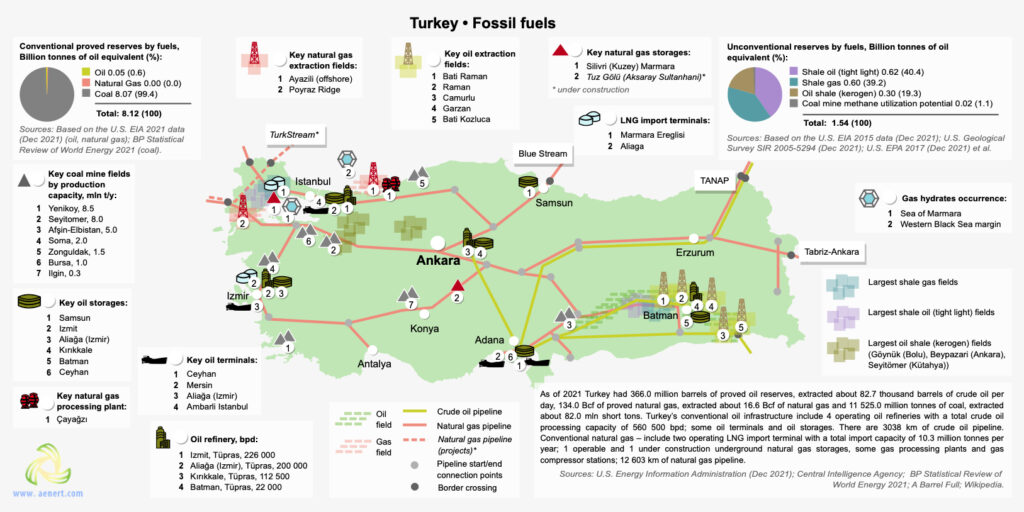
The research conducted by two Italian geologists was lapidary in warning of the risks of drilling on the Tauro mountain range, 800 kilometers long, which then declines from the summit of 3,734 meters above sea level towards the fragmented offshoots of Gaziantep (860 m asl) and Kahramanmaraş (568 m asl).
«The article deals with the geology of the foothills structure belt of the Taurus Mountains in Southeast Turkey. This area includes three main geological provinces from the south northward: (a) the foreland area, (b) the foothills structure belt, which grades into (c) the Taurus orogenic ridge» wrote in the Abstract of the research published in volume 48 of 1964 of the American Association of Petroleum Geologists the Italians M. Rigo de Righi and A. Cortesini (Source 3).
«As proved by regional geologic studies and wildcat drilling carried out by Turkish Gulf Oil Company, a 10,000-foot thick gravity slide, composed of allochthonous sheets of eugeosynclinal sediments and basic igneous rocks, was found intercalated in an Upper Cretaceous shaly-sandy sequence».
After making their technical observations as insiders, they concluded with an eloquent sentence: «After a general description of the stratigraphic units in the area, emphasis is given to the geology of the allochthonous slide complex. A general hypothesis on the origin and emplacement of these regional gravity slides is outlined. The article ends with some considerations on problems of oil exploration in areas affected by gravity slides».
3 – THE CORRELATION BETWEEN DRILLS, SUBSIDENCY AND EARTHQUAKES
Let’s jump back decades and we get to 2000 when a study by Bulent Coskun reported by Geological Magazine (source 4) introduces a well-known element of danger.
«The older structures were formed during the late Cretaceous movements, but they have been reactivated by latest Miocene tectonic activities with appearance of the Strands of the Dead Sea Fault in the sedimentary basin. The geothermal studies show also that, as a result of the Tertiary transgressions and volcanic activity, the northern and southern sectors of the Gaziantep Basin underwent differing subsidence and structural histories».
Subsidence or subsistence is a slow and progressive sinking of the bottom of a marine basin or continental area.
As we wrote in a previous investigation on the topic, it should be remembered that there are no detailed hydrogeological studies that have examined the feared causal link between drilling, subsidence and earthquakes.
Maria Rita D’Orsogna, a researcher at California State University, who has been following the problem of drilling between the USA and Italy for years, revealed to Adnkronos Italian News agency a series of cases ascertained all over the world where oil activities were linked to telluric movements around the sixth degree of the Richter scale, as reported by the Ocean for Future website which made an interesting synthesis
For example, in the United States many areas have been hit by earthquake swarms right in the areas where fracking was carried out (Arkansas, Ohio, Oklahoma, Texas).
In Italy, the so-called ICHESE COMMISSION (this acronym stands for: International Commission on Hydrocarbon Exploration and Seismicity in the Emilia Region) investigated the possible correlation between oil wells and the earthquakes that struck Emilia-Romagna on 20 and 29 May 2012, killing 27 people and causing hundreds of injuries, reaching an ambiguous and alarming conclusion.
The “Ichese” Commission pointed its finger in particular at an extraction site (Cavone, in Mirandola, in the province of Modena) twenty kilometers from the epicenter of the earthquake: in the conclusions of the report it was said that “it cannot be excluded that the activities mining at the site may have triggered the May 20 earthquake, the epicenter of which is 20 kilometers away”.
4 – HUNT FOR BLACK GOLD NEAR THE EARTHQUAKE EPICENTRE
From 2000 we arrive to 2021 when Sukru Merey of the Department of Petroleum and Natural Gas Engineering, Batman University, Turkey, Can Polat, Department of Petroleum and Natural Gas Engineering, Izmir Katip Celebi University, Izmir, Turkey, and Tuna Eren, Eni International Resources Limited reveal a huge gap (source 5) in their research named “Design of Horizontal Wellbore in Dadas Shales of Turkey by Considering Wellbore Stability and Reservoir Geomechanics”.
«Currently, Dadas shales are popular in Turkey because of its oil and gas potential so horizontal drilling and hydraulic fracturing operations are being held. However, in literature, there is no study about horizontal wellbore designs for Dadas shales. This study will be novel and provide information about the horizontal drilling design of Dadas shales».
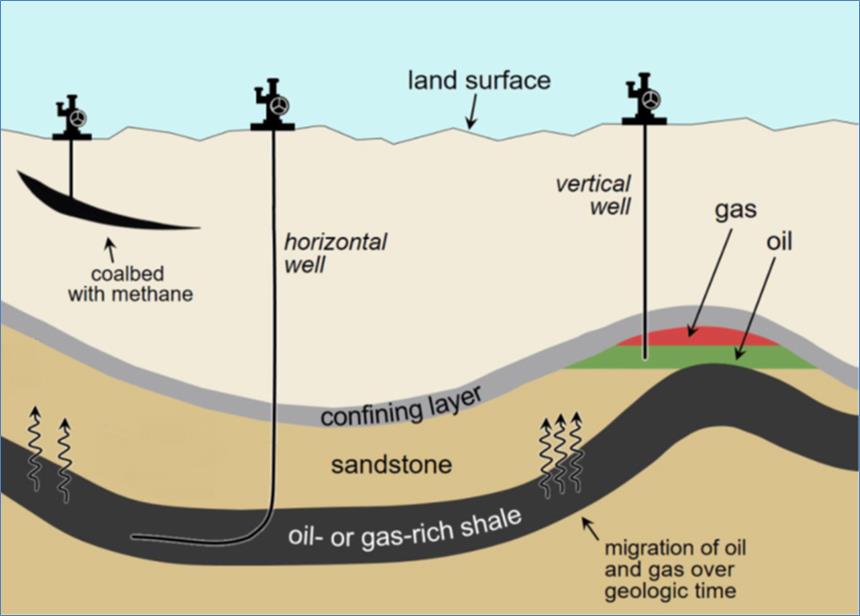
But their attention is paid exclusively to the «optimum direction of horizontal well was suggested to avoid any wellbore stability problems».
The complexity of the technique of extracting that type of oil (and gas) was illustrated in 2014 by Selami Uras, vice president of Transatlantic Petroleum Ltd., a joint venture between Turkey, Bulgaria and Romania, which is among the most powerful in oil especially in Anatolia for the number of extraction licenses after the state Turkish Petroleum Corporation and the multinational Perenco.
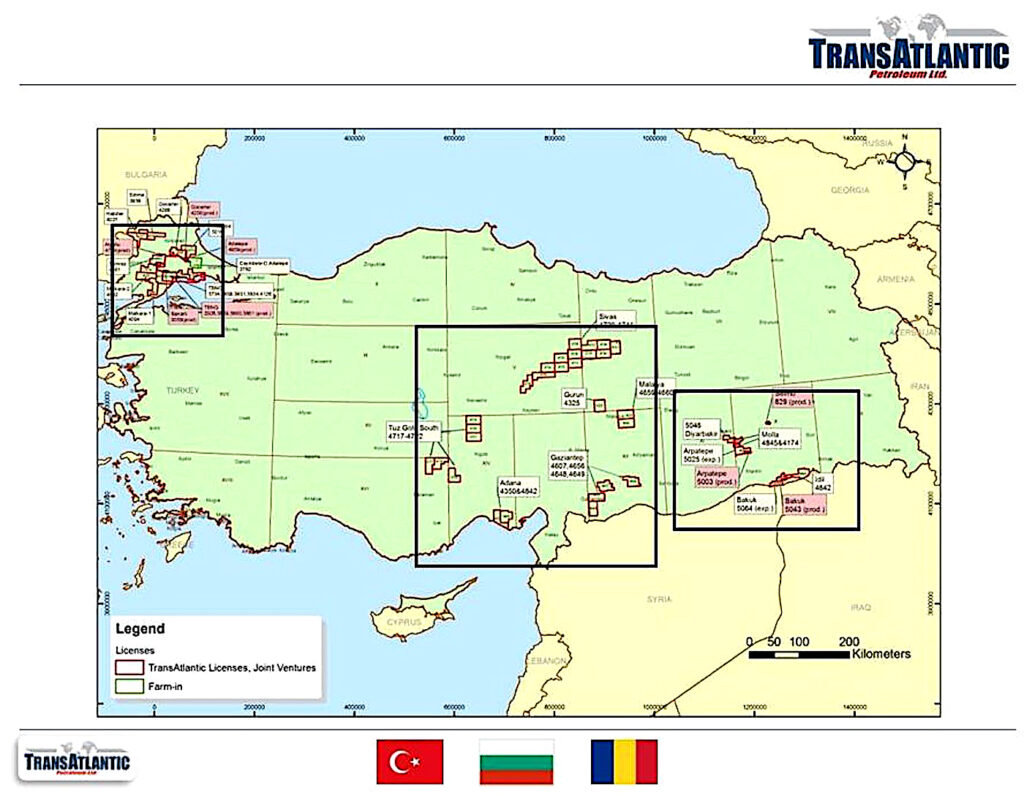
Uras stated on the specialized site AA Energy (Source 6) that a new exploration well, called ‘Bahar-6,” which is located in the southeastern part of Turkey, has a potential to become Turkey’s most productive oil well as of 2015. Uras said the geographical structure was challenging as they had to drill 3,000 meters to reach the oil.
«Selami Uras said they used shale technology, an unconventional method for oil and gas extraction, in their operations in Turkey. He said they used ‘fracking’ in the Bahar-6 well and other wells. ‘Fracking’ indicates the fracturing of rocks to extract gas or fuel using fluid pressure, most often with chemical additives» we can read in the article.
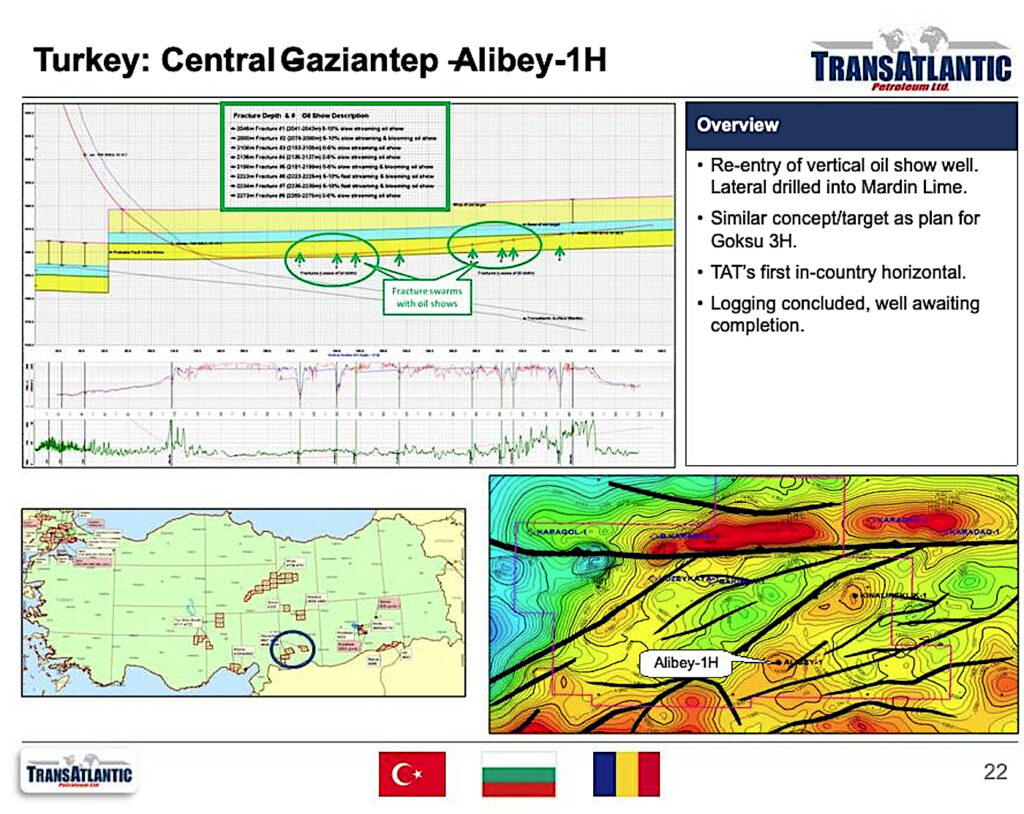
And where are Transatlantic Petroleum’s other wells located? Throughout the SE Anatolian Basin, the basin that also includes Gaziantep and nearby Kahramanmaraş, the epicenter of the devastating earthquake on Monday 6 February 2023.
But it’s not the only company to have reduced that area to a colander for years.
5 – THE GAZIANTEP AND KAHRAMANMARAS AREAS REDUCED TO A COLANDER
reported in Valeura Energy Inc (Source 8). is a Canadian-based public company currently engaged in the exploration, development and production of oil and natural gas in Turkey and Western Canada.
It was not easy to map the shale oil wells around the site of the earthquake because there is little information in English. But with the usual help of Divine Providence we then found the Turkish site Enerji Gunlugu.net (Source 9) which means “Energy Diary”.
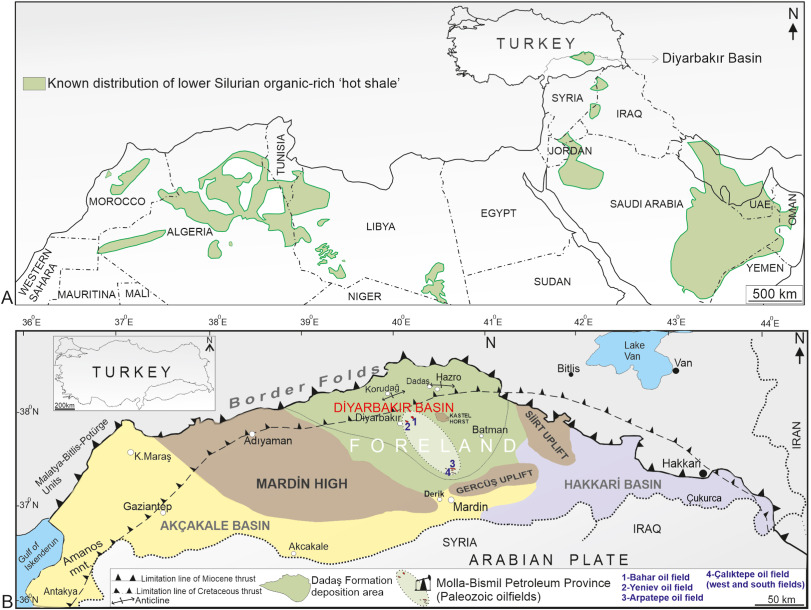
From 2016 onwards there has been a hail of applications for licenses for the exploration of the subsoil in search of black gold. Even with many sacrifices due to the complexity and costs budgeted by the director of Turkey’s state-owned oil company TPAO.
“The partnership, which conducts oil exploration in Gaziantep and Kahramanmaraş provinces, has requested to terminate its operations in two oil exploration fields. The Directorate General for Petroleum Affairs of the Ministry of Energy and Natural Resources has made its statement known by publishing it in today’s Official Gazette» wrote the site on December 29, 2016 regarding the waiver of Thrace Basin Natural Gas Turkey Corporation, Pinnacle Turkey Inc , and Transatlantic Exploration Mediterranean Int Pty Ltd Şti.

In 2017, a massive exploration program was launched: «MTA will search for mineral, petroleum and geothermal resources by drilling in a total of 100 points in the Merkez and Göksun districts of Kahramanmaraş. The Group will search for mineral, petroleum and geothermal resources (excluding searches carried out by seismic, electric, magnetic, electromagnetic, geophysical, etc. methods) by carrying out 100 drillings at variable depths of 80-120 meters in the licenses of a total of 2915.77 hectares belonging to exploration licenses for industrial raw materials’».
In 2019 Arar Petrol was awarded 6 oil exploration licenses for 6 lots in Adana, Osmaniye, Mersin and Kahramanmaraş provinces.
Two years later, in November 2020, it was the national oil company that started the searches: «TPAO will search for oil with the Altınpınar-1 exploration well to be drilled within the borders of the Araban district of Gaziantep with oil exploration activities. If oil or natural gas is found following the exploration work, the well will be put into production. While the maximum depth of the well is determined to be 2,300 m during the exploration work, this depth is expected to be reached in an estimated 43 days. The duration of the research activity was determined to be 93 days after the establishment of the site»
A year later, in December 2021, it started another drilling: «TPAO will search for oil with the Kayalar-1 exploration well to be drilled within the boundaries of the Nizip district of Gaziantep».
«TPAO will search for oil with three exploration wells to be drilled within the borders of the Araban district of Gaziantep» announced an article dated 21 July 2022. While in August of the same year «Akıncı 2023 Petrol Ltd. turned to MAPEG (Ministry of ‘Energy – ed) to obtain 4 separate oil exploration licenses in 4 parcels in Gaziantep and Antakya».
On October 7 of the same year, «Shalesys Energy applied for 10-lot oil exploration licenses in Diyarbakır, Şanlıurfa. Gaziantep and Kahramanmaras». Right in the city of the epicenter of the earthquake.
«4 drilling wells will be drilled within the boundaries of Yavuzeli district of Gaziantep for oil exploration. EANDE Petroleum Crude Oil and Natural Gas Exploration Production Ltd. Sti. of TC in Gaziantep Province, Yavuzeli District, Süleymanobası Village» is the most recent announcement on January 19, 2023.
«With the drilling activity, in which the rotation drilling method will be used, the aim is to determine the presence of oil that can be operated by observing the state of the oil reserves. If oil or natural gas is found as a result of exploration activities, the well will begin production.
After what happened, it will be very difficult for drilling to resume at full speed in the earthquake area in the short term.
After this investigation, the repeated seismic swarms recorded in the Adriatic Sea after the restarting of numerous underwater drills take on an even more spectral value.
Fabio Giuseppe Carlo Carisio
© COPYRIGHT GOSPA NEWS
prohibition of reproduction without authorization
follow Gospa News on Telegram
MAIN SOURCES
GOSPA NEWS – APOCALYPSE’S BLARES
GOSPA NEWS – GEOPOLITICS – ECONOMY
ALL SOURCES HERE IN THE ITALIAN ORIGINAL VERSION OF THIS INVESTIGATION
https://www.gospanews.net/en/2023/02/06/cybernetic-pandemic-as-forecast-by-wef-massive-hackers-attack-in-eu-and-us-detected-by-italian-cybersecurity-agency/

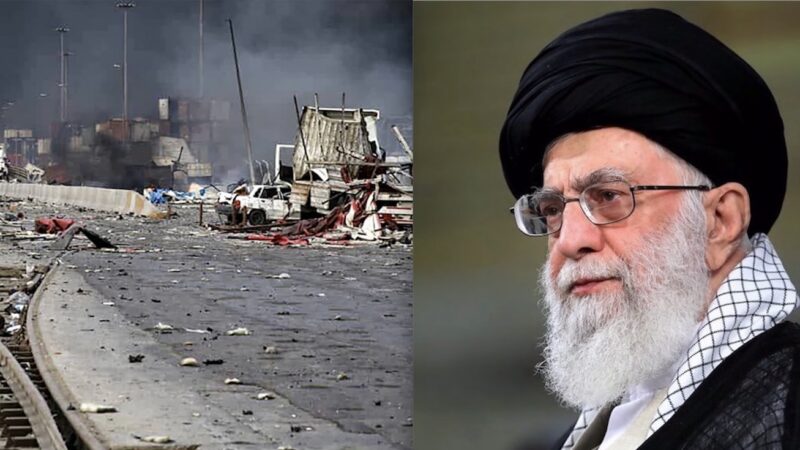
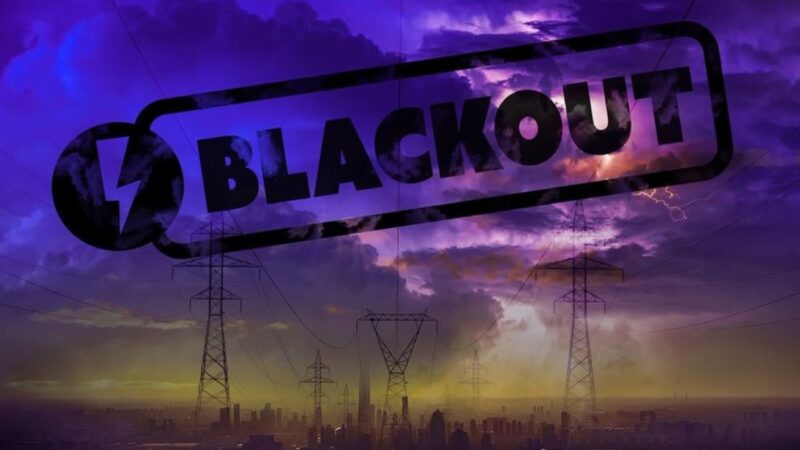

The pushback on this is enormous. We submitted new article about this at https://www.asiangreennews.com/mysterious-turkiye-syria-earthquakes-inquiry-needed/ to a well known global research center canada. Quickly the editor appropiated 1/4 of my ideas and slapped out new article with emf theory for inquiry needed. He did rebuff on purpose. They do not want anything except the most ridiculous. Just so you know who is a gate keeper. Thank you for inspiring us to continue investigating this.
Thanks
I just want to share my article that cites yours. No need to “be afraid.” Many good groups have been aware of issues around fracking since 20 years ago. Just some alt news is deliberately censoring and redirecting everything towards electronic modification of the ionosphere. It’s more down to earth than that. It is sad when someone who is qualified with a PhD in one field thinks he is also on matters he does not really understand because he has never taken geology. I really do have experience, even if I am just a minority female. Here is the link at asiangreennews(dot)com.